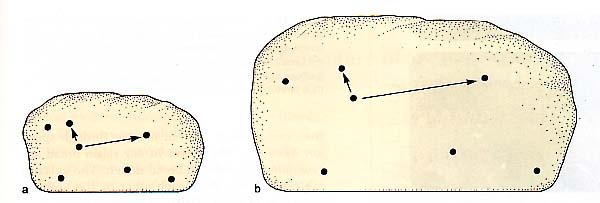The correct interpretation of Hubble's observations is that space itself is expanding. The galaxies aren't exactly moving, but the space in between them is growing over time. No matter what galaxy you happen to live in, the expansion of space itself makes it look as though all the rest of the galaxies are moving away from you.
The traditional analogy that is used in this scenario is the "raisin bread universe". Imagine that every galaxy is a raisin in a loaf of raisin bread. As the bread bakes, the whole loaf expands. The raisins all used to be closer together, but as the bread expands they all become more distant from each other. No matter what raisin you happen to be, it looks as though all the other raisins are running away. Same thing with the galaxies in the universe.
This is a pretty potent analogy for grasping what's meant by the expansion of the universe. Yet, it's rarely given a good visual form. Here are a few versions I could find:

The version above is from this website.
Here's an animated gif:

This one is from this webpage.
What do you think? Could you do better? Do these images work to convey the idea?
No comments:
Post a Comment